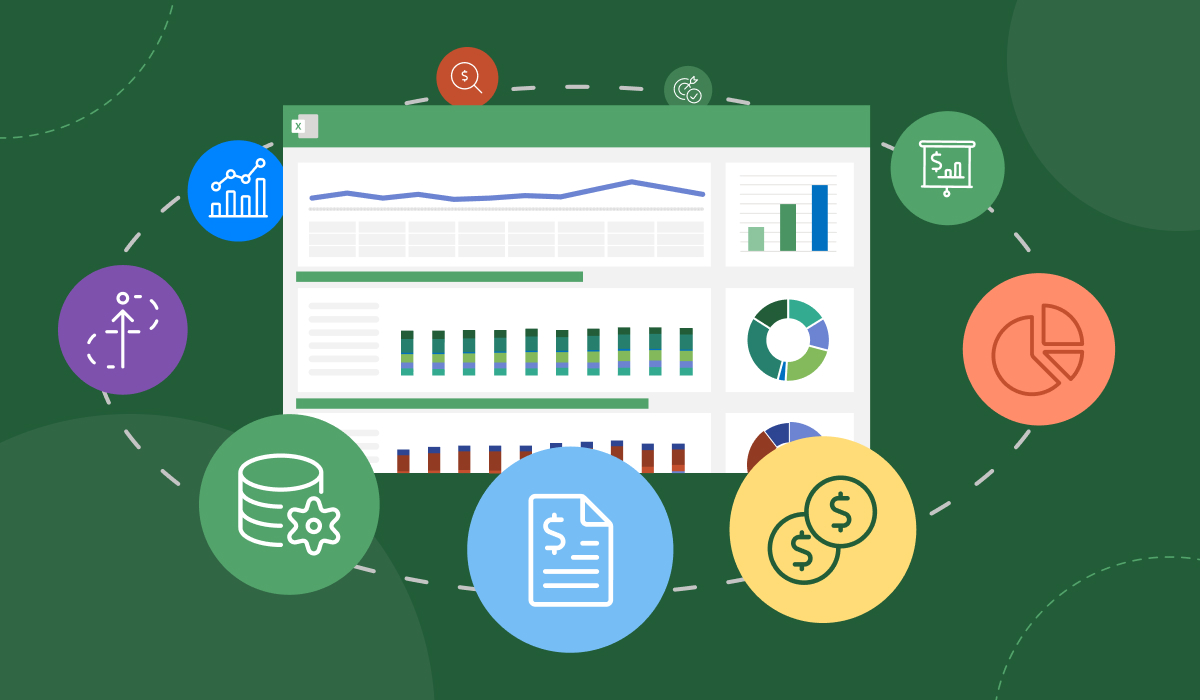
Climate change, an exploding housing market, and the aftereffects of the pandemic are all contributing to unpredictability in insurance markets. With potential economic stresses putting a strain on capital reserves and liquidity, insurers are under pressure to deliver for stakeholders and consumers. "Optimizing cost structures and strategically prioritizing investments" is critical write analysts in EY's 2021 Global Insurance Outlook.
Unfortunately, many insurers are not as prepared as they could be. A recent Deloitte global insurance outlook survey found that 79% of industry executives agreed, that "their insurer has been challenged to plan for and invest in targeted areas where they can have a competitive advantage post-COVID-19". However, only 25% believe their companies have a "clear vision and action plan to achieve financial resilience." Now that insurance firms have survived the pandemic, they must pivot to thrive.
To thrive, you must have clear insight into your finances and make mission-critical decisions driven by real-time, continuously updated KPIs. This is where an insurance dashboard can really help.
KPI dashboards provide instant and real-time access to all your critical financials. They deliver both raw data and visualisation, reporting, modelling and analysis, providing you with a clear view of your numbers and deeper insight into those numbers.
But insurance dashboards are only as good as the financial KPIs they include. While some data is intriguing, it might not be informative. You don't have time to waste on interesting data that provides little insight into your company's financial situation or fails to inform company strategy. Focusing on the data that provides you with an understanding you can leverage is crucial to your growth and success.
Here are 15 financial KPIs every insurer should be including on their metrics dashboard.
Tracking written and earned premiums provides a clear picture of past, current and future revenue in the short term. This is a critical component for assessing your revenue and plotting future growth. This metric should include:
Losses and loss ratios allow you to estimate losses and determine the size of your loss reserves. The gross insured losses you have accumulated, ceded incurred losses and any adjustments you make to your loss reserves should be tracked to provide comprehensive insight into actual and potential losses. Loss ratios will show you how your premiums stack up against your losses and tell you how these numbers are trending in real time.
These KPIs should also include your gross incurred losses or the total amount of paid claims and loss reserves at any given time. Finally, your ceded ratio--ceded insurance balances measured against policyholder surplus--will help you visualize just how reliant you are on others assuming your portfolio risks.
These KPIs help you identify top performers in sales, but you can also use these numbers to compare against industry averages for similar businesses.
This KPI provides insurers with a clear understanding of their risk related to reliance on ceded or reinsured policies. You can see just how reliant you are on ceding policies and whether you are too dependent upon a single reinsurer for your portfolio of ceded policies.
Also known as reinsurance recoverables, this KPI helps you understand how much reimbursement you can expect from your contracted reinsurance companies. This can include paid and unpaid losses and loss adjustment expenses, such as amounts you may receive for unsettled or unreported claims.
Strategizing for the future involves both actual and projected numbers. Average weighted commission rates apply calculations of the estimated chance of closing opportunities to all of your open opportunities, helping you understand what you stand to earn from potential sales opportunities.
Case reserves are an estimate for the amount that you can expect to pay for a specific claim. Underestimating or overestimating case reserves can pose problems for insurers, so having eyes on the net claims change in case reserves is critical.
As a measure of sales growth, this KPI informs you, at a glance, exactly how many potential new sales you have in the pipeline.
In addition to new policy applications, you will want to monitor the number of policies renewed by existing clients. This KPI is a good indication of customer experience.
This KPI tracks the number of rejected claims and rejected policy renewals against the number of received applications and renewals and presents it as a rate.
An informative and easily understood KPI, this metric illustrates the average premium rates for new policies sold over a period, such as per quarter or annually, and is key for strategizing growth.
How many policies have reached expiration and are eligible for renewal is a critical KPI to track for informing sales and customer service initiatives and decisions.
This is the premium acquired from new policies for a specific amount of time. It's a way to measure and track expansion or growth and the potential for scale.
This KPI tracks the ratio of policyholders renewing policies to those who opt to end their contracts. This is another excellent measurement of customer satisfaction.
Another indicator of risk exposure and potential profit, quota share ceded premiums KPIs provide you with a measurement of the premiums you can expect to retain from your reinsurance agreements.
Making data-driven decisions is a key success indicator, but it can be a challenge to know what to focus on with the wealth of available data. Tracking the right financial metrics is crucial to the success of your insurance business, helping to maximize output, fuel growth and ensuring that you pivot, when needed. It's also critical to providing shareholders and other key stakeholders with the visibility they demand. By focusing on key metrics or KPIs, you will have access to effective and efficient mission-critical data when you need it.